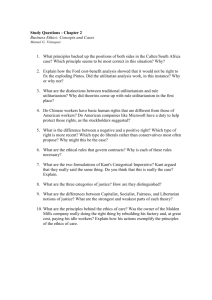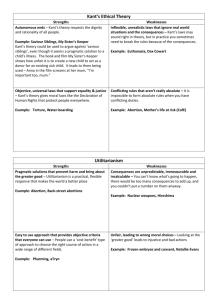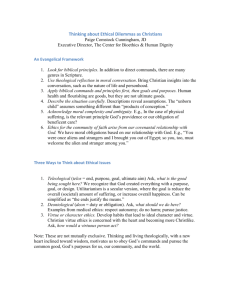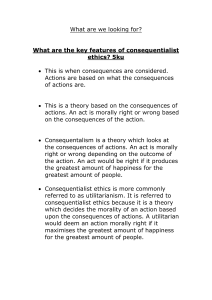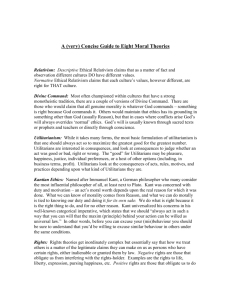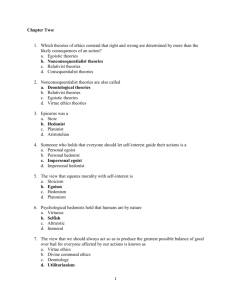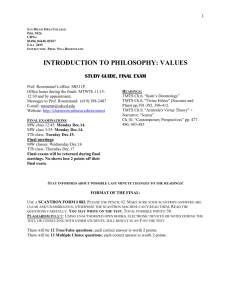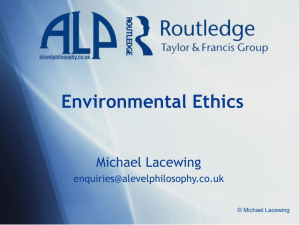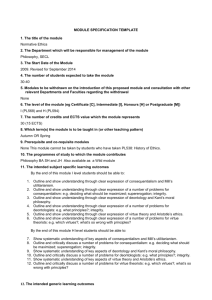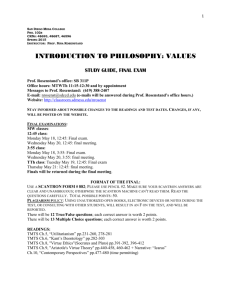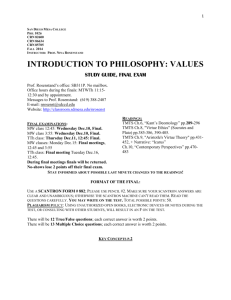Environmental Ethics: Applied
advertisement
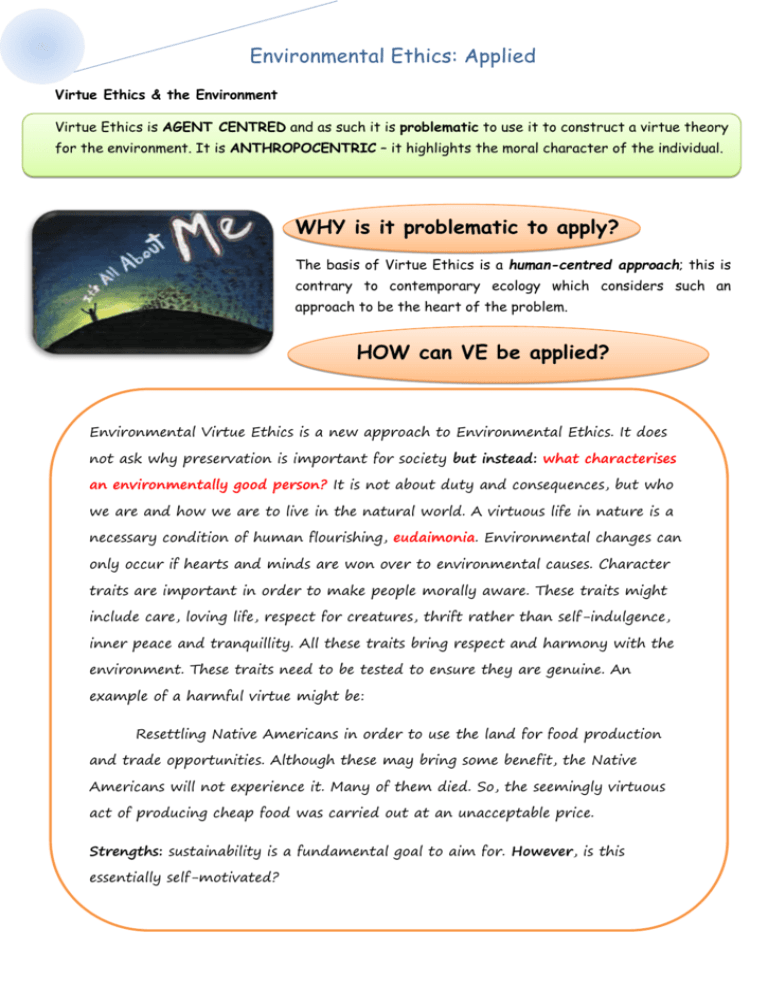
Environmental Ethics: Applied Virtue Ethics & the Environment Virtue Ethics is AGENT CENTRED and as such it is problematic to use it to construct a virtue theory for the environment. It is ANTHROPOCENTRIC – it highlights the moral character of the individual. WHY is it problematic to apply? The basis of Virtue Ethics is a human-centred approach; this is contrary to contemporary ecology which considers such an approach to be the heart of the problem. HOW can VE be applied? Environmental Virtue Ethics is a new approach to Environmental Ethics. It does not ask why preservation is important for society but instead: what characterises an environmentally good person? It is not about duty and consequences, but who we are and how we are to live in the natural world. A virtuous life in nature is a necessary condition of human flourishing, eudaimonia. Environmental changes can only occur if hearts and minds are won over to environmental causes. Character traits are important in order to make people morally aware. These traits might include care, loving life, respect for creatures, thrift rather than self-indulgence, inner peace and tranquillity. All these traits bring respect and harmony with the environment. These traits need to be tested to ensure they are genuine. An example of a harmful virtue might be: Resettling Native Americans in order to use the land for food production and trade opportunities. Although these may bring some benefit, the Native Americans will not experience it. Many of them died. So, the seemingly virtuous act of producing cheap food was carried out at an unacceptable price. Strengths: sustainability is a fundamental goal to aim for. However, is this essentially self-motivated? Environmental Ethics: Applied Kant & the Environment When Applying Kant’s theory, you must follow the Categorical Imperative. All spheres of life should be grounded in reason. People should act only upon those maxims they would be willing to see become universal norms. People should never be treated as a means to an end. His theory is generally anthropocentric, based on the idea that rational nature alone has absolute and conditional value. Kant sees an inter-relationship between human-beings and creation, both work in harmony to produce a world of freedom. The natural world is logical and purposeful, humans fit into this. Cruelty to animals is irrational. Kant maintained that a person likely to beat a dog is likely to beat a person. He, the man using violence, is a brute devoid of the rational understanding that makes him a rational being. Animals exist for the purpose of humanity and should be treated with respect. Nature should not be exploited – humans have a duty to survive and thus destroying the habitat is immoral. It reduces our chances of survival. Nature should not be treated as a means to an end, but an end in itself. Kant also argued that the intrinsic beauty of nature is linked to its moral goodness. The environment should not be exploited for financial gain. Summarise Kant’s approach to use of animals (key words: rational beings, good will, exploitation, pollution) Consider if Kant’s approach is practicable? Can you use it? Environmental Ethics: Applied Utilitarianism and Environmental Ethics Since it is clear that destroying the environment will bring long-term harm to all species, including humans, utilitarians will weigh up the long-term harm against the short-term gain from exploiting the natural resources. Bentham Mill Enjoyed nature and liked to garden! Nature is not nice! Pleasure is preferred to pain and Nature need to be controlled and enhanced by humanity, otherwise it this is reflected in nature Sentient-centred – animals matter. descends into chaos! Anthropocentric – humans matter You should consider the differences in qualitative and quantitative utilitarianism and what effect they would have on approaching environmental issues.: Qualitative Utilitarianism (a development of Mill’s higher pleasure) would seek toput pleaure in the context of human welfare – they would ask “what sort of environment is required to maximise the quality of life of human or all sentient creatures?” Quantitative Utilitarianism (a development of Bentham’s ideas concerning the greates good for the greatest number) – asks the question “what sort of environment is required to maximise the welfare benefits for the maximum number of people and sentient creatures?” How would this be calculated? Is this a long term approach? How would you calculate the needs of future generations? Preference Utilitarianism The moral course of action is the maximisation of preference satisfaction for the current generation. Assuming that neglecting the environment has no major effect on the current generation, then the case for preserving the environment is weak. (from the shell book)
